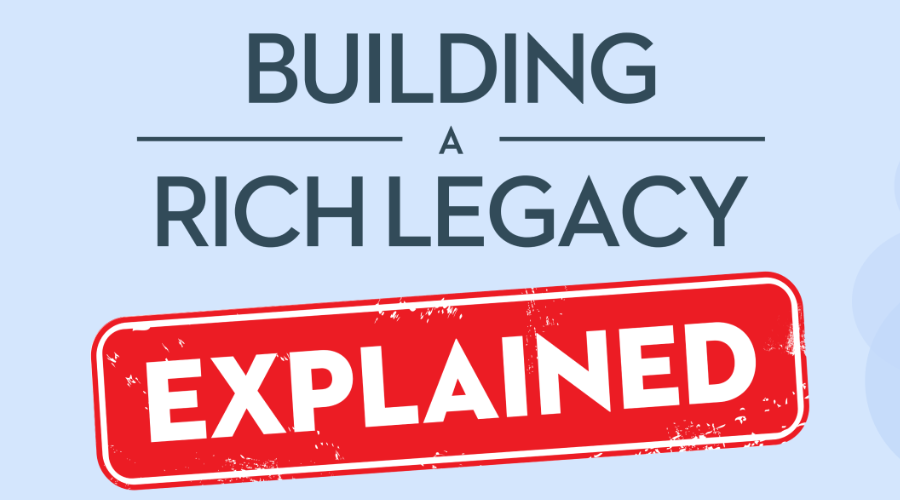Many Canadians dream of an ideal retirement, being able to live out their older years with leisure, travel, and spend quality time with loved ones. The unsettling reality is that this lifestyle will be out of reach for a significant amount of retirees due to the widening retirement gap – the gap between what people have saved and what they’ll need for a comfortable retirement. In a 2023 Deloitte Canada report, “Running out of time”, it was revealed that 55% of near-retiree households will need to make lifestyle changes to avoid outliving their financial savings for retirement, a number that’s expected to jump to 72%.
What is retirement income gap?
The retirement gap is the problem where near-retirees and retirees aren’t expected to have enough income in retirement. Why this is happening is more complicated than poor saving habits; it’s a result of bigger societal shifts that are making it more difficult to outlive your retirement income. Below are a few factors that have made this a growing problem for many.
Longevity challenges in retirement planning:
Advances in healthcare and living standards have allowed Canadians to live longer, healthier lives, extending the average lifespan into their 80s. While this is a positive change, it also poses a challenge for retirement planning, as retirees need to ensure their retirement savings last longer or they risk outliving their savings.
Rising costs of living in Canada:
Living costs in Canada have continued to surge, particularly in urban centers. These escalating costs make it harder to save money for your retirement while also living on a fixed income in order to maintain a comfortable retirement lifestyle. “44% of working Canadians are dipping into their retirement savings to pay for non-retirement related expenses. Of those households, 37% did so because they needed to cover their daily expenses or other household debt” according to the Deloitte report.
Decline of traditional defined benefit pension plans:
Traditional Defined Benefit (DB) pensions from employers, once a cornerstone of retirement security, have become less common. These retirement plans were a dependable retirement income source where your employer would pay you a guaranteed retirement income for life. In recent times, employers will mostly offer a Defined Contribution (DC) pension where employees choose a desired investment amount and fund, which is sometimes matched by the employer. However, these plans place the burden of saving and the investment risk squarely on the employee’s shoulders making retirement outcomes uncertain. Furthermore, employer pensions are not available to many Canadians, with only a third of Canada’s working population having an employer-sponsored pension according to a 2021 report from the National Institute on Ageing (Canadian Perspectives on the Financial Realities of Ageing in Place).
Lack of financial literacy:
A fundamental lack of financial literacy across various demographics in Canada makes it more difficult for effective retirement planning. Many Canadians lack the necessary knowledge to make informed decisions about investments, budgeting, and managing financial risks. A 2023 Fidelity Retirement Report highlighted that nearly one-third of Canadians don’t have a clear idea about how much to save for retirement, underscoring the need for a better financial education. On top of this, only 35% of retiree and near-retiree households seek financial advice for their retirement, according to Deloitte’s report. This knowledge gap in financial planning makes it that much more difficult to plan for retirement needs.
The impact on retirement gap
As noted in the 2023 Deloitte report, the various factors of longevity, rising cost of living, declining employer pensions and low financial literacy are contributing to the retirement gap.
Retirement planning is more complex
As noted in the Deloitte report there’s “confusion and misunderstanding around how—and how much— [retirees] should save”. The combination of limited financial knowledge while trying to predict how much money you’ll need based on increasing life expectancies and living costs makes retirement planning a daunting task. On top of this, decreased employer pension support means there’s less money being put aside to save up for retirement.
Retirement costs are rising
As Canadians are living longer than anticipated, retirees must tailor their retirement plans to accommodate more years of living and the associated complications, such as higher health-related costs. As retirees are shouldering more expenses in today’s inflationary environment, this increases the risk of emotional burnout and outliving your retirement savings.
Retirement advice is seemingly inaccessible
Despite the availability of financial resources and solutions in Canada, many individuals feel that they are unable to get the support they need for a worry-free retirement.
The State of Canada’s Retirement Gap
Retirement in Canada is becoming increasingly difficult for many older adults when we put things into the perspective of how complex, costly, and seemingly limited the available support is. Some are going as far as describing the potential income gap as a possible retirement crisis. Canada’s population is experiencing rapid aging, by the year 2043 the proportion of individuals over 65 is projected to make up a quarter of Canada’s population according to Environics Analytics. This puts immense pressure on individuals, our communities, and ultimately the government to help a growing vulnerable population.
Increasing support to solve the retirement gap from various private, non-for-profit, and government organizations have been at work to change the narrative and close it. For example, the Canadian government announced that there will be enhancements to the Canadian Pension Plan (CPP), where recipients can expect to receive more starting in 2024, however, a lot still needs to be done for older adults.
If you are feeling the pressure of sustaining retirement income, the CHIP Reverse Mortgage from HomeEquity Bank could be the perfect solution. For many Canadians, transitioning to a comfortable retirement life is a big consideration.
For homeowners aged 55+, there is a way to boost your retirement income which can help you in fully transitioning to retirement, without having to work. A CHIP Reverse Mortgage from HomeEquity Bank allows you to cash in up to 55% of the value of your home. You can receive this tax-free money either in a lump sum or in regular payments, to allow you to increase your retirement income to a level that allows you to live retirement on your terms.
A key advantage of a reverse mortgage is that you don’t have to make regular mortgage payments. You only pay back what you owe when you move out or sell your home, so your retirement income isn’t negatively impacted.
You can find out how much you qualify for with a CHIP Reverse Mortgage by calling us at 1-866-522-2447 or by using our reverse mortgage calculator.































